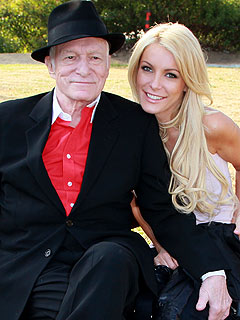More than 30 incoming medical school students will get a full ride to UCLA's David Geffen School of Medicine thanks to a $100-million gift from the school's benefactor.
The donation by Geffen, a philanthropist and entertainment executive, will create a scholarship fund to cover the recipients' entire cost of medical school, including tuition, room and board, books and other expenses.
"It is a fantastic vote of confidence for higher education," said UCLA Chancellor Gene Block. "We're eternally grateful."
The gift, which will be announced Thursday, makes Geffen the largest individual donor to UCLA and to any single UC campus. In 2002, Geffen donated $200 million in unrestricted funds to the medical school. At the time, the campus was renamed in his honor.
Geffen, 69, declined to comment but said in a statement that students shouldn't be discouraged by the expense of medical school.
"The cost of a world-class medical education should not deter our future innovators, doctors and scientists from the path they hope to pursue," he said. "We need the students at this world-class institution to be driven by determination and the desire to do their best work and not by the fear of crushing debt. I hope in doing this that others will be inspired to do the same."
More than 85% of medical school students nationwide graduate with some debt. Among those, the average is $170,000, according to the Assn. of American Medical Colleges. That debt often influences graduates' career choices and has contributed to a shortage of primary care doctors, who often earn less than specialists. That shortage will be exacerbated by the aging of the population and the federal expansion of health coverage to the uninsured.
The UCLA scholarships are "unprecedented," said John Prescott, chief academic officer for the association. "My mouth dropped open when I saw this," he said. "It is going to create quite a legacy for the school."
The medical school's dean, A. Eugene Washington, said that he was thrilled by the donation and that it will free scholarship recipients from the tremendous burden of debt. The four-year tab for medical school students entering next fall could exceed $300,000 in tuition, housing, fees and other costs.
The scholarship will allow the school to free up some of the money it uses for financial aid and will enable students to follow their passions and become leading physicians and researchers without worrying about paying off loans, he said. "It is going to be for a group of the top students who will be freed up to pursue whatever their interests are," he said.
The David Geffen Medical Scholarship Fund will provide scholarships for up to 33 students beginning medical school in 2013. Up to three of the scholarships are available for students pursuing a joint doctorate and medical school degree. The students will be chosen based on merit, not financial need.
Block said the scholarships will help recruit more of the nation's top medical school applicants. Already, more than 7,500 applicants compete for 163 first-year slots at the school.
Emily Dubina, 25, a third-year medical school student at UCLA, received a partial scholarship from Geffen's original contribution. The new scholarships, she said, are an amazing opportunity that will take away a lot of the stress of day-to-day life. The recipients will be able to focus on becoming great physicians rather than on how much money they are spending on their education.
"I so wish they had that when I started," she said. "Life would have been much better."
Geffen began his career as a mail room worker at the William Morris Agency in Manhattan and later earned a fortune in the record and movie industries. He formed DreamWorks SKG in 1994 with Jeffrey Katzenberg and Steven Spielberg. He has also become a well-known benefactor, giving to such organizations as the Motion Picture and Television Fund and to the Geffen Playhouse.
anna.gorman@latimes.com












